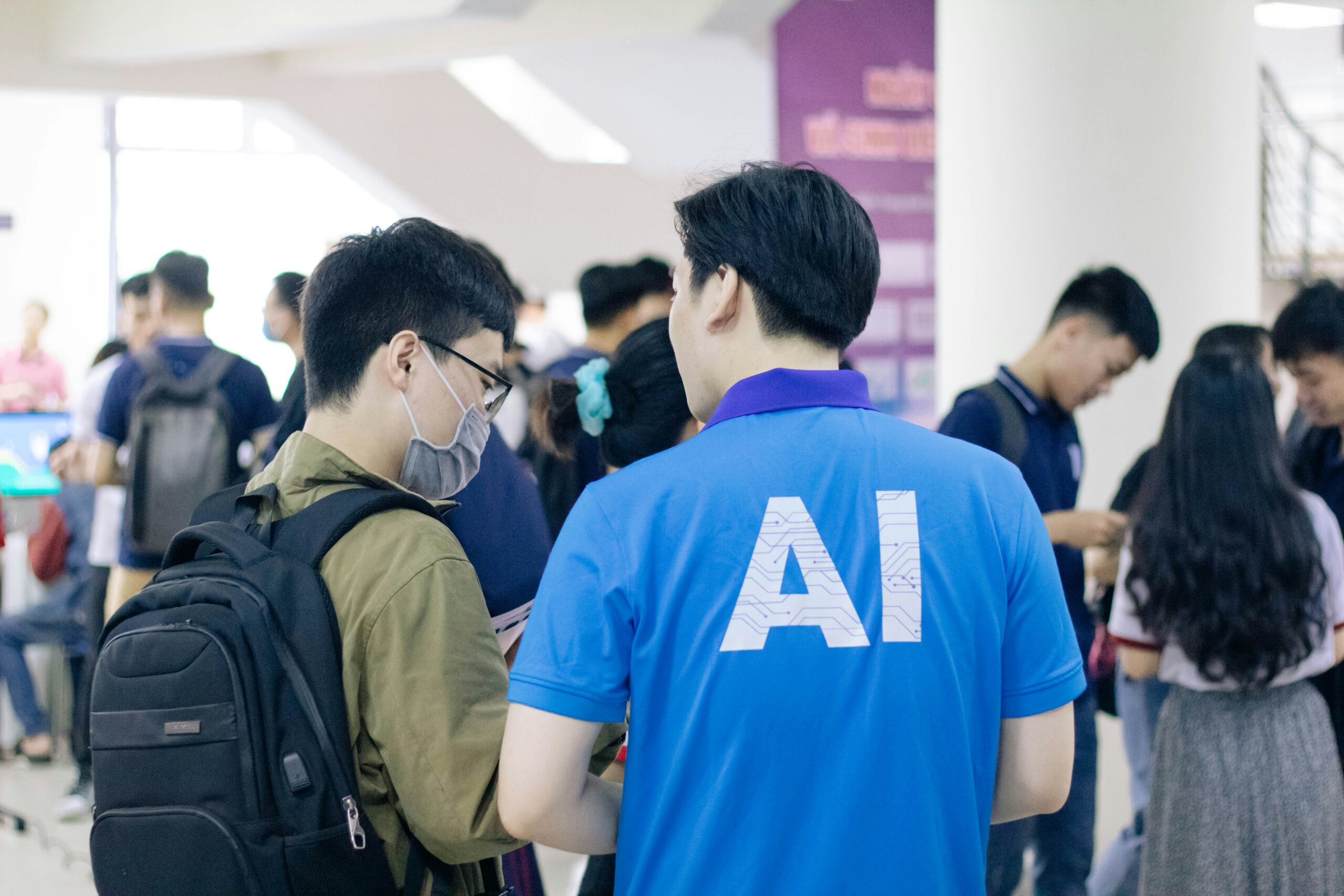
As the digital marketing landscape undergoes rapid evolution, the integration of AI, particularly chatbots, stands out as a pivotal innovation.
These computer programs bring a unique blend of efficiency and creativity to customer interactions, revolutionizing everything from retail shopping carts to financial services advice.
Brand loyalty and customer engagement are no longer just about the human touch; they’re about the seamless, personalized experience that chatbots can provide.
The intelligent algorithms driving these virtual assistants help organizations not only to retain customers but to turn every engagement into an opportunity for growth.
Keep reading to discover how this technology is transforming marketing strategies, offering unprecedented insight into consumer behavior and opening up new frontiers in personalized communication.
Key Takeaways
- Chatbots Are Transforming the Marketing Landscape Through Personalization and Enhanced Customer Engagement
- Advancements in AI and Machine Learning Contribute to the Predictive Capabilities of Chatbots, Improving Customer Experience
- Omni-Channel Strategies and Integration of Chatbots Into Multiple Touchpoints Enhance User Engagement and Satisfaction
- The Ethical Use of Consumer Data and Privacy Are Critical Considerations in Personalized, AI-driven Marketing Strategies
- Upcoming AI Developments in Emotional Intelligence and Predictive Analytics Are Poised to Revolutionize Chatbot Interactions
Tracing the Origins of Chatbots in Marketing

In the ever-changing landscape of digital marketing, the introduction of chatbots marked a significant evolution in how businesses approach customer engagement and service. It started with basic computer programs designed to simulate conversation, offering assistance through pre-defined scripts. These early forms of artificial intelligence set the stage for the transformative shift in marketing automation that we witness today.
As the early chatbots paved the way, the marketing industry recognized their potential for more profound interaction—not just as tools for answering queries but as key players in refining marketing strategies. This initial exploration into chatbot technology highlighted the promise of more nuanced user experiences and their growing impact on marketing dynamics.
Early Chatbot Technology for Customer Interaction
The journey of chatbots within the marketplace took off as more than just a novelty; their ability to provide timely customer support around the clock significantly changed the retail industry’s approach to user engagement. Businesses quickly realized that customer service could transcend the traditional nine-to-five constraints and, with the right programming, chatbots could ensure no customer query went unanswered, bolstering brand loyalty and reputation:
| Year | Development | Impact on Marketing |
|---|---|---|
| Early 2000s | Emergence of basic chatbot technology | Introduction of 24/7 customer service basics |
| 2010s | Integration with social media platforms | Expansion of customer support channels |
| Present Day | Advancements in AI and machine learning | Enhanced personalization in user interactions |
First-Generation AI Chatbots and Their Limitations
As chatbots started to be used across different marketing channels, the drawbacks of the first generation of these virtual assistants became apparent. They faced difficulties in understanding the subtleties of human language, resulting in frustrating user experiences when basic queries couldn’t be accurately processed due to the chatbots relying on inflexible rule-based algorithms. This challenge underscored the crucial requirement for improvements in natural language processing to address the growing complexity of customer interaction and service demands.
The Shift Towards More Interactive Marketing Bots
The push toward more sophisticated and interactive marketing bots signaled a revolution in customer engagement and brand loyalty. By embracing technologies like machine learning and sentiment analysis, modern chatbots serve not only as customer service aids but as pivotal components in a brand’s marketing strategy, helping to foster meaningful connections with consumers.
- The introduction of machine learning empowers chatbots to provide personalized recommendations, enhancing the shopping experience.
- Sentiment analysis enables chatbots to interpret and respond to the emotions behind customer inquiries, improving communication effectiveness.
- Chatbots are now capable of managing complex customer service scenarios, going far beyond the initial simplistic interactions of early iterations.
Understanding the Initial Impact on Marketing Strategies
As businesses integrated chatbots into their customer interaction workflows, they gained invaluable insights into consumer behavior, which in turn shaped marketing strategies. Retailers harnessed these insights to fine-tune email campaigns and optimize their online shopping platforms, while service-oriented sectors like health care and financial services leveraged chatbots for patient and client education—each sector redefining its approach to customer retention and lead generation.
Key Milestones in AI Chatbot Development

The journey of chatbots in the digital marketing landscape has seen a series of breakthroughs, pushing customer engagement into unprecedented levels of interactivity and personalization. Using advanced natural language processing, these computer programs have gone beyond their initial script-following functions, transforming into virtual assistants that can interact smoothly on social media platforms.
With their improved predictive abilities and contextual awareness, chatbots have become skilled at understanding consumer intent. This enables businesses to provide timely and relevant responses. Enhanced by developments in sentiment analysis, chatbots now play a crucial role in refining targeted marketing efforts, contributing to the art of nurturing customer relationships.
Breakthroughs in Natural Language Processing
Breakthroughs in natural language processing (NLP) have significantly enhanced the capabilities of chatbots, allowing them to understand and process human speech with improved precision. This has enabled them to interact in a manner that feels more natural and responsive, fostering improved customer experience and streamlining the customer service process.
Integration of Chatbots With Social Media Platforms
The integration of chatbots with social media platforms revolutionized the landscape of customer interaction, allowing brands to deliver instant, personalized support directly through channels where consumers spend a significant portion of their time. This strategic move has helped companies to place customer service at the heart of customer experience, keeping the conversation going within the very apps that users frequent, from Twitter feeds to Facebook Messenger, providing a seamless blend of social engagement and support.
| Platform | Year of Chatbot Adoption | Significance |
|---|---|---|
| Facebook Messenger | 2016 | Opened avenues for brands to engage consumers on a popular messaging app. |
| 2017 | Introduced direct message bots for streamlined customer support and engagement. | |
| 2018 | Enabled businesses to leverage the world’s most-used messaging app for customer service. |
Emergence of Contextual and Predictive Abilities
The arrival of contextual and predictive capabilities has been a game changer in the chatbot arena, empowering these virtual assistants to offer not just reactive responses but proactive support as well. By analyzing user behavior and past interactions, chatbots can now anticipate needs and offer solutions before the customer has to ask, revolutionizing the approach to personalized customer care and streamlining marketing efforts to be more aligned with consumer expectations.
Advancements in Sentiment Analysis for Targeted Marketing
The innovation of sentiment analysis within chatbot technology has revolutionized targeted marketing by equipping algorithms with the ability to discern the subtleties of human emotion in text. This empowers chatbots to tailor their responses in real time and engage customers with empathetic communication that significantly enhances user experience and brand connection.
How Chatbots Are Reshaping Consumer Engagement

Chatbots, with their constant evolution, are revolutionizing the marketing landscape by offering nuanced ways to engage with consumers.
They are transforming customer interaction from a passive encounter to an experience rich in personalized content delivery that meets the individual needs of each customer.
Real-time customer service provided by these sophisticated chatbots reinforces brand loyalty, as quick and efficient responses make customers feel valued and understood.
By implementing feedback loops, businesses can now tap into chatbot interactions to refine user experiences continuously.
Furthermore, the transition from reactive to proactive chatbots, which predict and address customer needs, signifies a monumental leap in building lasting customer relationships.
Personalized Content Delivery Through Chatbots
In the competitive theatre of customer-centric marketing, chatbots have emerged as masters of personalization, promoting deeper engagement by tailoring conversations to the preferences and behaviors of each user. This technology harnesses the power of data analysis and predictive analytics to deliver content that resonates with individual interests, elevating the digital marketing experience to unprecedented levels of personal connection and relevance.
Real-Time Customer Service and Its Effects on Loyalty
Embracing the integration of real-time customer service via chatbots has fundamentally altered the dynamics of consumer loyalty. Businesses that leverage these AI-fueled systems are witnessing a marked increase in customer retention rates as their clientele appreciate the immediate and accurate responses to their inquiries. This swift engagement not only satisfies the need for prompt assistance but also reinforces the trust and confidence customers place in a brand, leading to a more loyal customer base.
Implementing Feedback Loops for Improved User Experience
The introduction of feedback loops into chatbot systems signifies a forward-thinking approach to enhancing user experiences. By analyzing customer interactions and obtaining direct input on their satisfaction levels, companies can refine their chatbot algorithms for more accurate, helpful, and contextually relevant conversations. This continuous refinement helps organizations not only meet but exceed user expectations, fostering a sense of being heard and valued within the customer base.
The Transition From Reactive to Proactive Chatbots
The shift from reactive to proactive chatbot engagement marks a significant change in marketing tactics, expanding the boundaries of customer relations into new territory. Fueled by machine learning and thorough data analysis, modern chatbots can predict user needs, providing advice and solutions before the user even recognizes the necessity. This proactive approach establishes a more consultative interaction, strengthening the connection between consumer and brand. It signals an era of marketing where anticipation is just as critical as response.
Analyzing Chatbots’ Effect on Conversion Rates

In the pursuit of transformative marketing strategies, chatbots have emerged as innovative catalysts for improving conversion rates. By engaging with potential leads in real-time, these sophisticated tools enhance the customer journey from the first interaction to the final purchase. Marketing teams, armed with precise data, compare analytics before and after the adoption of chatbots, aiming to quantify their impact on sales figures.
The ongoing conversation involves numerous case studies highlighting instances where chatbots have notably boosted sales results. Moreover, the continuous refinement of chatbot scripts and deployment strategies underscores the overarching goal: achieving a strong return on investment that justifies the appeal of these virtual assistants.
Comparing Pre and Post-Chatbot Conversion Analytics
Analyzing conversion metrics before and after integrating chatbot technology offers compelling insights into user engagement and shopping cart behaviors. Organizations notice a shift in user interaction—where customized chatbot encounters lead to a streamlined experience, ultimately impacting purchase decisions and enhancing revenue generation. Through precise data collection and analysis, businesses gauge the effectiveness of chatbots in converting casual browsers into loyal customers, underlining the importance of personalization in the sales funnel.
Strategies for Optimizing Chatbot Scripts to Drive Sales
Smart marketers are tapping into the potential of chatbot scripts, fine-tuning the language to engage consumers and facilitate their journey to purchase. Customizing scripts to address common customer concerns and strategically incorporating upselling prompts during interactions are effective practices. These strategies are successful in turning casual conversations into opportunities that generate revenue.
Measuring Return on Investment From Chatbot Deployment
When assessing the return on investment from deploying chatbots, companies concentrate on the interaction between cost reduction and revenue enhancement. Through the integration of chatbots, they frequently witness a reduction in expenses linked to traditional customer support roles, coupled with an increase in sales due to advanced lead nurturing and enhanced customer experiences. This insightful analysis ensures that the financial investment in chatbot technology produces measurable advantages, sustaining the company’s competitive edge in a data-driven marketing era.
- Setting quantifiable benchmarks to track performance after chatbot integration.
- Calculating the savings on operational costs by reducing the need for extensive human customer support staff.
- Assessing increased sales and improved shopping cart completion rates, contributing to top-line growth.
Leveraging AI for Data-Driven Marketing Insights

As the capabilities of chatbots advance, they not only facilitate everyday interactions with customers but also meticulously gather nuanced details of consumer behavior.
This intelligence enables businesses to develop actionable strategies, refine ongoing campaigns through precise analytics, and predict future market trends.
The incorporation of predictive modeling based on comprehensive datasets facilitated by chatbots signals a new era. In this era, each customer interaction moves a brand closer to the pinnacle of marketing success.
Chatbots as Tools for Gathering Consumer Data
Embedded within the customer service frameworks, chatbots stand as silent observers, capturing streams of personal data that range from purchase history to preference patterns. Skilled in unobtrusively amassing vast datasets, these AI systems empower organizations to craft astutely targeted campaigns infused with insights that accurately reflect and anticipate consumer needs and behaviors.
Translating Data Into Actionable Marketing Strategies
Chatbots, fueled by AI and deep learning, are redefining how brands leverage consumer data to craft marketing strategies that resonate on a personal level. This information, gleaned from interactions and behavior analysis, informs the creation of targeted campaigns that not only engage but also convert, aligning perfectly with the user’s journey. As marketers concentrate on this wealth of information, they elevate their strategies from broad-stroke overtures to precise, data-driven actions that drive meaningful connections with their audience.
Impact of AI-driven Analytics on Campaign Refinement
Driven by the advancements in AI, chatbot analytics have become a cornerstone in refining marketing campaigns, allowing teams to pivot strategies based on real-time feedback and behavioral data. These cutting-edge analytics provide the agility to tweak messaging, offers, and customer interactions, ensuring campaigns remain fresh, relevant, and effective in an ever-shifting market landscape.
Predictive Modeling Based on Chatbot-Facilitated Data
Predictive modeling elevates marketing intelligence by integrating chatbot-facilitated data, enabling brands to anticipate future consumer behaviors and market demands with remarkable accuracy. These dynamic models draw from rich interaction data, allowing marketers to forecast trends and adjust their strategies in a way that resonates with the user’s evolving needs. As a result, organizations that employ predictive modeling can stay one step ahead, ensuring their offerings align with potential shifts in consumer interests and market dynamics.
The Growing Role of Voice-Assisted Chatbots

The digital landscape is resonating with the emergence of voice-assisted chatbots, marking a new chapter in the fusion of AI and marketing strategies. Propelled by advancements in speech recognition and natural language processing, these innovative tools are transforming the paradigm from text-based interactions to dynamic, voice-driven dialogues.
Brands are swiftly incorporating voice assistants to enhance marketing strategies, seeking to improve user interactions with smoother, more intuitive communication channels. With voice-activated chatbots becoming more widespread, the marketing sector is attentively monitoring trends and gearing up for a future where voice commands continue to shape consumer engagement and behavior.
Advancements From Text to Voice Interactions
As technology leaps forward, we’re witnessing a transformative shift from typing to talking, with voice-assisted chatbots coming to the fore. This evolution capitalizes on the progress in speech recognition and natural language processing, enabling brands to offer consumers a more natural, conversational interface. The shift not only reflects consumer preferences for voice interactions but also significantly enhances the accessibility and user-friendliness of customer support systems.
Integrating Voice-Assistants in Marketing Strategies
By incorporating voice assistants into their marketing strategies, brands are leading a noticeable shift toward interactions that mimic natural human conversation. These digital assistants refine the consumer’s online journey, providing a seamless, voice-activated path that spans from gathering information to making purchases. Consequently, companies establish a stronger, more accessible presence in the lives of their target audience, laying the groundwork for deeper brand connections and increased engagement.
Enhancing User Experience With Voice-Activated Chatbots
Voice-activated chatbots are transforming the user experience by providing a more immersive and efficient way to navigate services and inquiries. These chatbots cater to the user’s preference for convenience, allowing for hands-free interaction and reducing the friction typically associated with typing out requests. Through voice assistance, brands can offer a level of intuitiveness and responsiveness that aligns with the fast-paced lifestyle of modern consumers, thereby enhancing overall satisfaction and forging stronger brand-customer relationships.
Predictions for Voice Chatbot Trends in Marketing
With the increasing popularity of smart speakers and voice-enabled devices, marketing experts anticipate that voice-assisted chatbots will become integral to consumers’ daily routines. These chatbots are expected to further personalize interactions by adapting to individual speech patterns and providing more accurate responses.
- Voice-assisted chatbots will become more ubiquitous within households, enhancing brand presence in everyday consumer life.
- Chatbots will be increasingly tailored to recognize and adapt to user-specific vocal nuances, delivering highly personalized experiences.
- Enhanced data collection from voice interactions will allow for refined marketing strategies that can predict and address user needs without manual input.
By combining advancements in AI with voice recognition capabilities, voice-assisted chatbots are poised to enhance the precision of consumer targeting. This development promises a richer, more intimate layer of interaction that goes beyond the screen, welcoming brands into the conversational spaces of homes and beyond. It paints a future where user experience is not just seen but heard and felt.
AI Chatbots and the Future of Personalization

The relentless progression of technology in the marketing realm has brought AI chatbots to the forefront as powerful architects of personalized experiences. Evolving with deep learning capabilities, these chatbots analyze and predict consumer behavior, providing customized interactions that were once only imagined in science fiction.
Beyond the intricacies of customer relations, AI-driven marketing strategies also spark crucial discussions about ethics, addressing consumer privacy as they skillfully segment audiences and deliver individualized content. As businesses explore the potential of AI, the convergence of deep learning, ethical data usage, and the delivery of personalized experiences becomes a fertile ground for innovation and debate in modern marketing.
Deep Learning and Its Role in Granular Personalization
Deep learning, an advanced subset of machine learning, is revolutionizing the personalization aspect of customer interactions by processing vast quantities of data and recognizing intricate patterns in consumer behavior. This enables chatbots to deliver highly individualized experiences, addressing the unique preferences and needs of each customer with an unprecedented level of detail and accuracy.
Next-Level Customer Segmentation Using AI
AI’s role in revolutionizing customer segmentation has set the stage for precision-targeted marketing initiatives. By drawing on algorithms capable of dissecting immense pools of personal data, AI equips businesses with the insight necessary to curate hyper-personalized user experiences:
- AI systems dissect user data to identify deep-rooted purchasing patterns and preferences.
- Marketers deploy AI-driven insights to direct content to the right audience, reducing resource waste and amplifying engagement.
- Advanced algorithms enable real-time segmentation adjustments, keeping pace with evolving consumer behaviors.
Delivering Individualized Offers and Content via Chatbots
Chatbots, now embedded with AI, have become sophisticated marketers within the digital realm, intelligently delivering customized offers and content to users. They skillfully combine current browsing data, past interactions, and purchase history to present deals that resonate with each individual’s distinct tastes and purchasing behavior, transforming traditional marketing into a more personalized dialogue between brand and consumer.
Ethical Considerations and Privacy in Data Usage
The swift rise of AI chatbots in personalizing marketing brings the responsibility of addressing ethical concerns, especially regarding the use and security of personal data. As organizations explore predictive analytics and personalized marketing, it is crucial to balance their enthusiasm for innovation with a strong privacy policy. This policy should safeguard user data and adhere to regulations such as the General Data Protection Regulation (GDPR). Prioritizing transparency in data collection and obtaining user consent is essential to maintain consumer trust. This ensures that the pursuit of customization does not compromise privacy and violate regulations.
Chatbots and the Integration With Other AI Technologies

The field of digital marketing is undergoing a remarkable transformation as AI technologies and chatbots combine their capabilities to form sophisticated, data-driven marketing ecosystems. Integrating AI chatbot intelligence into CRM systems revolutionizes customer relations by delivering personalized experiences at scale.
As we explore the different layers of this technological confluence, success stories emerge, showcasing how integrated marketing ecosystems can surpass traditional boundaries and provide a glimpse into a future of seamless, intelligent marketing solutions.
Collaborative Efforts Between Chatbots and AI-driven Tools
Chatbots, when integrated with other AI technologies, become the centerpiece of transformative digital marketing strategies. These collaborations, which may involve machine learning algorithms, computer vision, or natural language processing, extend the functionality of chatbots beyond mere conversation. They enable a holistic approach, optimizing various aspects of the marketing funnel from lead generation to customer retention and offering personalized, context-aware interactions at every touchpoint.
The Symbiotic Relationship Between AI Marketing Tools
In the realm of AI marketing, chatbots have taken center stage as focal points, establishing connections with other AI tools to illuminate new paths in customer experience. This symbiotic relationship cultivates an ecosystem where each technology enhances the strengths of the other: chatbots seamlessly interface with predictive analytics engines and sentiment analysis tools, enriching interactions and driving sharper marketing insights.
- Chatbots enhance sentiment analysis tools, providing an understanding of consumer emotions.
- Predictive analytics benefit from chatbot data, sharpening forecasts and business strategies.
- Together, these AI tools create a cohesive system, streamlining marketing workflows and customer relations.
Preparing for the Next Wave of AI-Driven Marketing

As we stand at the forefront of groundbreaking advancements in AI technology, the integration of chatbots into marketing strategies is on the brink of a remarkable transformation. This imminent innovation calls for marketers to deepen their understanding of AI’s capabilities and prepare for the upcoming shifts in consumer interaction.
Embracing these upcoming trends will not only require education in the emerging technologies set to reshape chatbots but also demand keen foresight to anticipate the evolving patterns of consumer behavior.
Marketing professionals must now develop adaptable strategies that can seamlessly integrate these future AI developments, ensuring their marketing efforts remain at the forefront of this digital renaissance.
Upcoming AI Technologies That Will Influence Chatbots
As the horizon of AI marketing expands, chatbots are on the brink of transformational change with upcoming technologies like deep learning, which promise to revolutionize the precision of customer interactions.
Innovations in emotional intelligence within AI are set to enable chatbots to respond to consumer sentiment and nuance as never before, while advancements in predictive analytics will empower them to anticipate customer needs with incredible accuracy.
These technological strides are expected to further entrench chatbots as integral facets of customer experience, offering brands fresh opportunities to connect with their audience in more meaningful ways.
Educating Marketing Teams on AI Advancements
To navigate the swift currents of AI marketing, marketing teams need to stay informed and well-versed in the latest AI advancements. Ongoing education empowers teams to leverage chatbot technology effectively, ensuring they are fully equipped to harness the creative and analytical powers of AI: from optimizing customer interactions to interpreting complex data sets to inform strategic decisions.
- Comprehensive training modules introduce marketing professionals to the intricacies of AI algorithms.
- Workshops and webinars keep teams abreast of cutting-edge chatbot features and deployment techniques.
- Cross-functional team collaborations encourage the sharing of AI knowledge and best practices.
Forecasting Changes in Consumer Behavior With AI Trends
The integration of AI trends into chatbot technology equips marketers with a powerful toolkit for predicting and adapting to shifts in consumer behavior. As AI models become more sophisticated, they analyze historical data and real-time interactions to provide foresight into future consumer preferences, effectively enabling businesses to stay ahead of consumer curves and craft proactive marketing strategies.
Developing Flexible Strategies for Future AI Integrations
In the ever-shifting landscape of AI marketing, creating flexible strategies is essential for integrating future AI advancements into marketing tactics. Businesses must embrace adaptive frameworks that can readily incorporate new chatbot functionalities and AI enhancements, ensuring their marketing remains dynamic and responsive to the latest technological evolutions.
Conclusion
In conclusion, the integration of AI-driven chatbots in marketing strategies has become a critical element for businesses seeking to enhance customer engagement and personalization.
As these virtual assistants evolve with advancements in natural language processing, machine learning, and other AI technologies, they not only facilitate 24/7 customer service but also enable deep insights into consumer behavior.
Through their ability to gather and analyze data, chatbots are reshaping marketing strategies, yielding higher conversion rates and stronger customer loyalty.
By employing sophisticated AI, chatbots are predicting consumer needs, tailoring interactions, and driving sales, marking their undeniable impact on the future of digital marketing.
As this technology continues to advance, marketing teams must stay informed and adapt their strategies to harness the full potential of AI chatbots, ensuring that they maintain a competitive edge in creating dynamic, data-driven customer experiences.

Comments